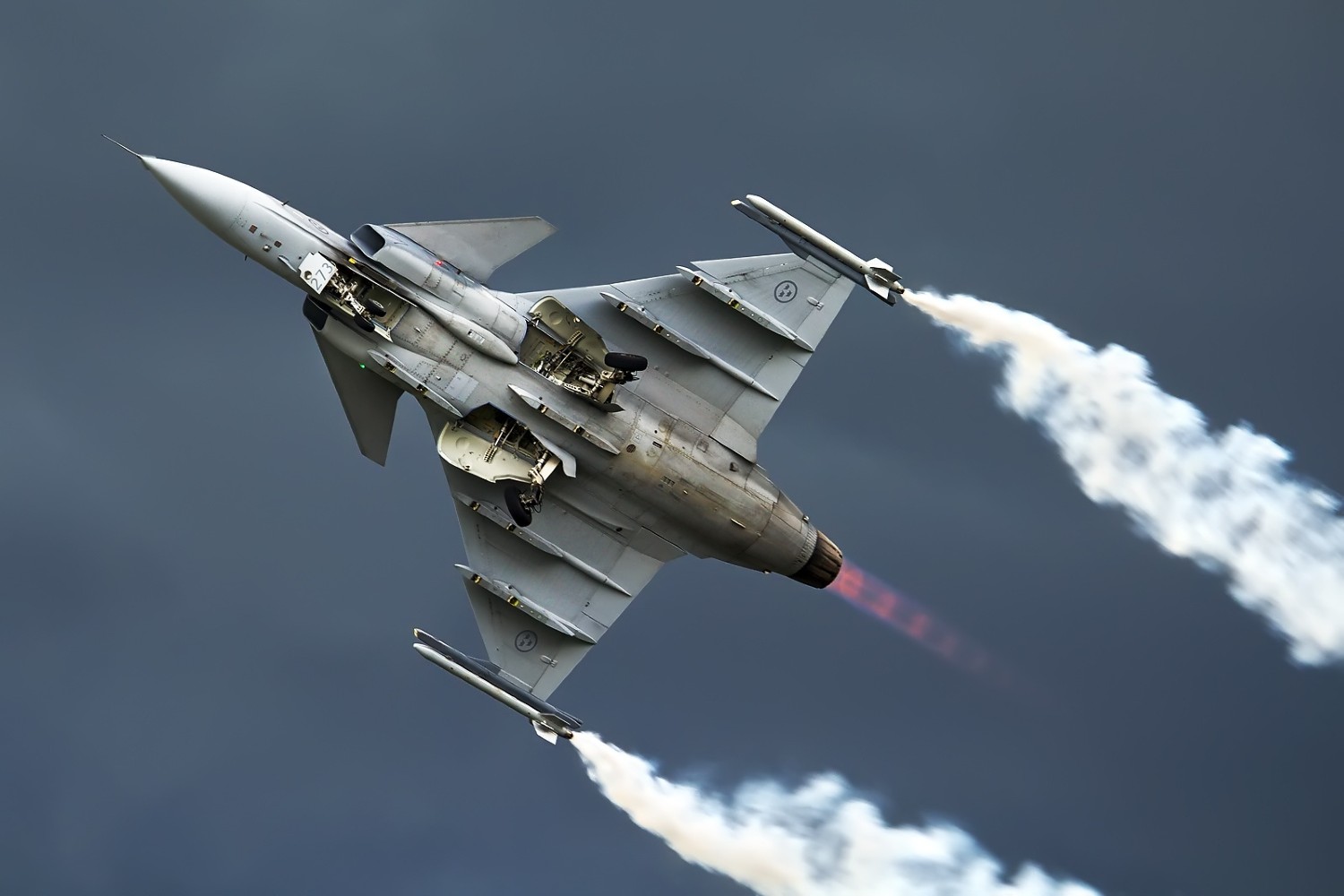Saab’s dreams of clinching a lucrative fighter jet contract with the Czech Republic ‘officially’ crashed. The development unfolded on January 29, 2024, when the Czech government cemented its commitment to procure Lockheed Martin F-35 Lightning II aircraft.
This marked the official entry of the Czech Republic into the F-35 Lightning II program. The government inked a Letter of Offer and Acceptance (LOA), signaling its intent to acquire 24 F-35A fighter jets.
With this signing, the Czech Republic became the 18th nation to join this prestigious program. The seeds of this pivotal decision were sown in September 2023 when the government greensignaled the estimated US$6.5 billion contract.
This agreement covered the cutting-edge aircraft and provisions for training, ammunition, personnel training, and service and logistical support.
The Czech Air Force is set to receive its initial batch of F-35A aircraft in 2031. This batch will boast the latest advanced Block 4 configuration, heralding a new era for the Czech military with the addition of an extra tactical squadron.
While hailed as a significant step towards enhancing interoperability and countering contemporary and future threats by US and Czech officials, this decision delivers a substantial blow to Saab.
The Swedish company grapples with missed opportunities and a waning international presence as rivals like the F-35 and Rafale dominate the market.
The future deployment of the F-35s signals a change of guard as these American machines are set to replace the 14 JAS-39 Gripen fighter jets currently operated by the Czech Air Force, leased from Sweden.
Despite a compelling offer from Sweden, which generously proposed a free transfer of Gripens leased from Stockholm, the Czech government remains steadfast in its commitment to the F-35, solidifying the formal agreement.
This strategic alignment underscores a paradigm shift in the global defense landscape, with Saab witnessing another setback and the F-35 emerging as the preferred choice to counter contemporary threats.
Lockheed Martin’s vice president and general manager of the F-35 program affirms that the fifth-generation capabilities of the F-35 position it as the optimal solution for the Czech Republic’s future fighter fleet, enhancing the nation’s effectiveness in the 21st-century security battlespace.
Waning Appeal Of SAAB Gripen
Saab, the Swedish aircraft manufacturer, has encountered a protracted struggle in the global market, failing to secure a single buyer for its planes over the past decade.
The last triumph for the Gripen fighter occurred in 2014 when Brazil entered a US$5.4 billion deal for 36 Swedish-made fighters.
That marked the last success in an overseas competition for Saab, following earlier successes in exporting Gripen to Hungary, the Czech Republic, South Africa, and Thailand.
During this period, Saab anticipated a production output ranging between 400 and 450 aircraft, encompassing single- and twin-seat versions.
The late 1990s witnessed South Africa entering into a procurement agreement with BAe/Saab for 26 Gripens (C/D standard) with minor modifications tailored to meet specific requirements.

Subsequently, Hungary signed a contract in November 2001 to lease 12 JAS 39A single-seaters and two JAS 39B two-seaters from Sweden.
In June 2004, the Czech Republic, swayed by Gripen International’s favorable financing and offset program, announced the lease of 14 Gripens, adapted to comply with NATO standards.
Continuing this trend, Thailand joined the fold in February 2008, ordering six Gripens (two single-seat C-models and four two-seat D-models) and following up with an additional order of six Gripen Cs in November 2010.
However, post-2014, Saab’s fortunes took a downturn as it faced several failures to secure new contracts. The frustration peaked in 2022 when Saab’s President and CEO, Micael Johansson, expressed dismay at the persistent lack of export success for the Gripen fighter jet.
Saab’s attempts to market the more advanced Gripen-E aircraft at a cost-effective price proved futile. The allure of the American fifth-generation fighter, the F-35 Lightning II, which gradually asserted dominance in Europe, consistently outpaced Saab.
This trend was evident as Finland, Switzerland, Canada, and the Czech Republic opted for the F-35 over the Saab Gripen to replace their aging fleets of fighter jets.
To break the prolonged dry spell of buyers for its Gripen fighter, Sweden is pinning its hopes on potential contracts with India, Thailand, and the Philippines.
The company has proposed the sale of 114 Gripen-E aircraft, the latest variant, to fulfill the multi-role fighter aircraft requirements of the Indian Air Force. Saab has said that the Gripen-E is positioned to address India’s security needs comprehensively.
However, Saab faces serious competition in India, with the Rafale fighter currently perceived as the top choice for the Indian Air Force.
On the other hand, Thailand, a Southeast Asian nation, has already possessed 12 Gripen C/D fighters since its acquisition in 2011. Bangkok is now intent on expanding its Gripen aircraft fleet, driven by the rejection of its attempt to acquire F-35 fighters from the United States.
The US justified its decision by asserting that Thailand lacked the necessary infrastructure, safety assurances, and operational capabilities, including airbase safety, maintenance, and trained pilots.
With this setback, Thailand is turning to Saab’s Gripen, contemplating the acquisition of the latest variant, the Gripen-E.
In the Philippines, recent developments have brought Saab closer to securing a deal for Gripen fighter aircraft. Signing a Memorandum of Understanding (MoU) between the Philippines and Sweden signals progress in Manila’s quest for Multi-Role Combat Aircraft (MRCA).
The Gripen JAS-39 and the F-16 from the United States stand as the two final contenders in the Philippines’ selection process, with the MoU reflecting a significant step toward potential Gripen acquisition.
Nonetheless, as Saab strategically positions itself in these critical markets, the outcomes in India, Thailand, and the Philippines will determine whether Gripen can overcome its challenges and reassert itself as a sought-after contender in the global fighter aircraft arena.
- Contact the author at ashishmichel(at)gmail.com
- Follow EurAsian Times on Google News




